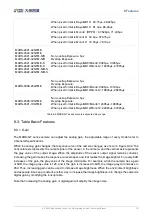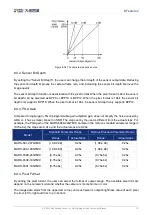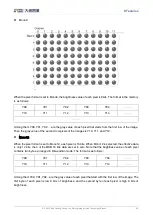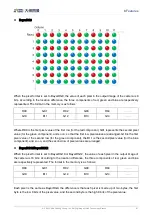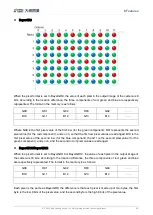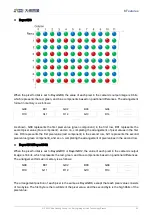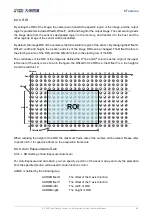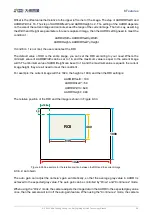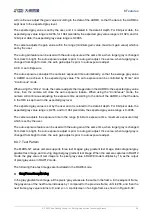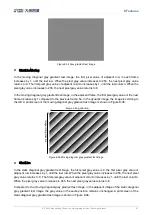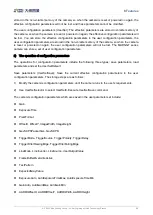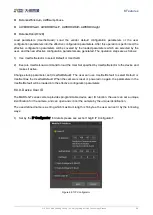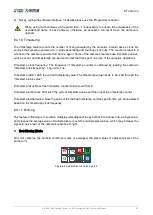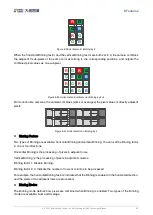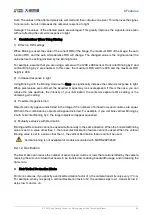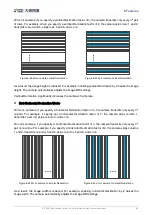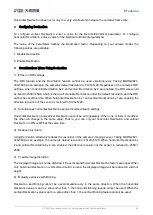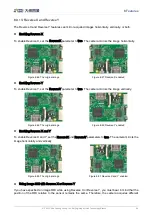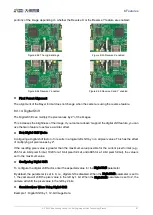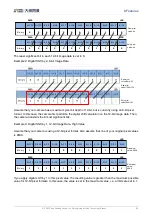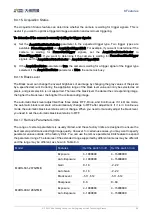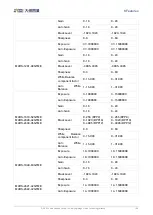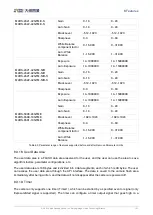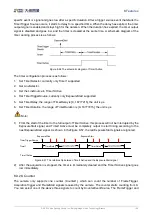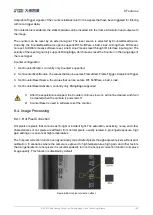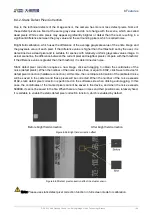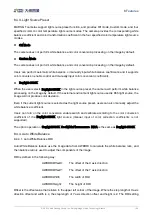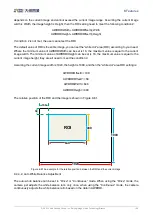
8.Features
© 2023 China Daheng Group, Inc. Beijing Image Vision Technology Branch 91
2)
Set by calling the software interface, for details please see the Programmer's Guide.
When using multi-cameras at the same time, it is necessary to ensure the uniqueness of the
user-defined name of each camera, otherwise, an exception will occur when the camera is
opened.
8.3.10.
Timestamp
The timestamp feature counts the number of ticks generated by the camera's internal device clock. As
soon as the camera is powered on, it starts generating and counting clock ticks. The counter is reset to 0
whenever the camera is powered off and on again. Some of the camera's features use timestamp values,
such as event, and timestamps can be used to test the time spent on some of the camera's operations.
Timestamp clock frequency: The frequency of timestamp counter is obtained by reading the camera's
"timestamp tick frequency". The unit is 1ns.
Timestamp latch: Latch the current timestamp value. The timestamp value needs to be read through the
"timestamp latch value".
Timestamp reset: Reset the timestamp counter and recount from 0.
Timestamp latch reset: First latch the current timestamp value and then reset the timestamp counter.
Timestamp latched value: Save the value of the latched timestamp, and the specific time can be calculated
based on the timestamp clock frequency.
8.3.11.
Binning
The feature of Binning is to combine multiple pixels adjacent to each other in the sensor into a single value,
and process the average value of multiple pixels or sum the multiple pixel values, which may increase the
signal-to-noise ratio or the camera’s response to light.
How Binning Works
On color cameras, the camera combines (sums or averages) the pixel values of adjacent pixels of the
same color:
R
G
B
G
R
G
G
B
Figure 8-38 Horizontal color Binning by 2


